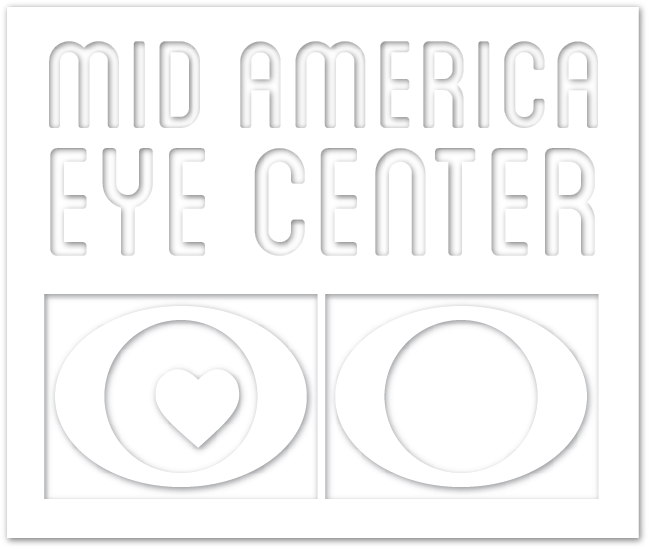Cataracts
A cataract is a progressive clouding of the eye's natural lens. (For reference, please see the accompanying diagram.) Think of the eye as being just like a camera. If the lens in a camera loses its clarity, a cloudy, indistinct picture results. This is exactly what happens to the eye's natural lens. While cataracts affect people of all ages, the occurrence increases with age. Over 50 percent of people past the age of 70 develop cataracts. Although the majority of cataracts are usually age-related, cataracts can also be due to medications, other eye diseases, surgery or trauma. Some people are born with cataracts. Those who develop cataracts describe the condition as being similar to looking through a waterfall or a piece of wax paper, with a gradual blurring or dimming of vision. Reading may become more difficult, and driving a car can become difficult, particularly in the bright sun and at night. Glare, halos around lights, or even double vision may be experienced. Currently, there is no effective non-surgical treatment to reverse or prevent the development of cataracts. The only way to regain clear vision is the surgical removal of the cataract.
Now Available: ReStor multifocal and
Toric Implants for our cataract patients
View/download premium intra ocular lens brochures for cataract surgical vision correction:
The multifocal lens for distance and near vision correction
The lens for correction of corneal astigmatism
following cataract surgery
These implant designs can further reduce the dependency on glasses following cataract surgery
Cataract Extraction
Cataract extraction is one of the most common surgical procedures performed. Dr. Parelman and Dr. Unterman have personally performed thousands of these procedures and have taught other surgeons modern cataract extraction techniques. The actual procedure to remove a cataract typically takes only ten to fifteen minutes.
The procedure is performed in an ambulatory surgical center. The Physicians Surgery Center, located next door to the Mid-America Eye Center office in Prairie Village, KS is an excellent outpatient facility which specializes in outpatient eye surgeries. Dr. Parelman and Dr. Unterman also operate at the Research Brookside Campus Center for Outpatient Surgery in Kansas City, MO. In addition, both doctors operate at the Nevada Regional Medical Center in Nevada, MO. Dr. Parelman operates at the Bates County Memorial Hospital in Butler, MO, and Dr. Unterman operates at the Cedar County Memorial Hospital in El Dorado Springs, MO.
Patients are usually asked to come to the facility approximately forty-five minutes to an hour before the procedure is to start so that they may receive antibiotic and dilating eye drops. Patients are awake during the procedure, but the eye is anesthetized so that there is no sensation of pain. Some patients receive a painless injection of anesthetic around the eye to prevent eye pain or movement, while others receive only anesthetic eye drops.
All patients undergoing cataract extraction are monitored by anesthesia services. Oftentimes patients find it comforting to have the surgeon talk to them during the brief procedure. The surgeon views the eye through an operating microscope. A very small opening into the eye is made, and a small ultrasound probe called a phacoemulsifier is placed into the eye. (See Diagram at Left.) The cataract is removed and an intraocular lens is inserted to take the place of the natural cataractous lens. (See Diagram at Left.) Each implant has a specific focusing power, and patients are typically much less dependent on spectacles following the procedure, often not needing glasses for driving or reading. With current techniques, sutures are rarely used. A special intraocular lens (toric IOL,) can be used to correct for astigmatism. Some patients are candidates for a multifocal intraocular lens, which can allow the patient to not need glasses after surgery for distance, intermediate or near vision.
At the end of the procedure eye drops are applied, and often a shield is placed over the eye to protect it. This is removed the next day when the patient is seen for the follow-up appointment.
During this appointment, additional instructions are given and patients are started on eye drops, in tapering dosages, for several weeks following surgery. With modern techniques, patients do not have to limit their activity following the procedure and can resume usual daily activities such as driving, lifting and bending over the day after the procedure.
Only one eye is operated on at a time, and in patients with cataracts in both eyes, typically the eye with the worst vision or more advanced cataract undergoes the procedure first. The cataract in the other eye can be removed within the next several weeks, if necessary. As is the case with the first cataract, it is up to the patient to determine whether and when a cataract should be removed based on his or her specific visual problems.
If a patient needs to change his or her glasses prescription following the procedure, this is usually done within four weeks of the procedure. Medicare will cover part of the cost of new spectacles following cataract extraction.
As with any medical procedure, there are specific risks and benefits to cataract extraction. After a thorough examination, Dr. Parelman or Dr. Unterman will discuss these issues personally. Once the patient has decided to proceed, specific dates for the surgery are given. Appropriate coverage and authorization are obtained by the Mid-America Eye Center Staff.









